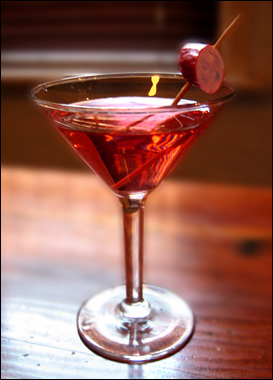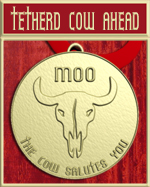Sun 14 Jan 2007
Flavour Chemistry
Posted by anaglyph under Bizarre, Food & Drink, Food Science, Science
[6] Comments
It is a peculiarity of the modern age that chicken chips* taste nothing at all like chicken. Chicken chips really don’t have a taste like any other foodstuff, as far as my tastebuds can tell. In fact the flavour of chicken chips is best described as ‘chicken chip flavour’.
There are lots of artificial flavours like this – ‘banana’ is another one, as is ‘smoked ham’.
This got me to wondering – how do flavour chemists decide what something tastes like? I think the process goes something like this:
Flavour Chemist #1: Hey, Sam – what do you think this tastes like?
Flavour Chemist #2: Hmm. I dunno…
Flavour Chemist #1: Chicken? Ham? Banana?
Flavour Chemist #2: Maybe ham? No, hang on… chicken. Yeah, chicken.
Flavour Chemist #1: Should I write ‘chicken’ on the flask?
Flavour Chemist #2: Yeah. Write ‘chicken’. Maybe write ‘smoked chicken’. It’s got a kind of smoky flavour…
Flavour Chemist #1: Er. I think maybe that’s ’cause I dropped my cigarette in it…
It can’t be long before flavour chemists cotton on to the same trick that the people who make paint charts use; you know – colours are now not named by their actual colour, but by some kind of aspirational descriptor like ‘Topiary Tint’ or ‘Treasures’ or ‘Powdery Mist’â€
So instead of supermarket shelves of faux raspberry, sour cream & chives and eggnog flavoured products we’d see – Moroccan Sunset flavoured chips, Velvet Cloud flavoured yoghurt and Monet flavoured soda.
See, ultimately this makes really good commercial sense. Our taste professors will no longer have to emulate, but are instead freed up to innovate. With no obligation to try and stick with analogies to existing foodstuffs, whole new avenues of possibility would be opened up.
The decision process might then go something like this:
Flavour Chemist #1: Hey, Sam – what do you think this tastes like?
Flavour Chemist #2: Hmm. I dunno… It’s sort of like a cheap toothpaste I once used on holidays in Greece…
Flavour Chemist #1: Excellent. I’ll label the flask ‘Grecian Morning’. Want to come for a spin in my new Porsche?
___________________________________________________________________________
*Or ‘crisps’ if that makes more sense in your part of the world…
†I kid you not. These are all real paint chart colours. I defy you to have any idea what colours they actually are.
___________________________________________________________________________




